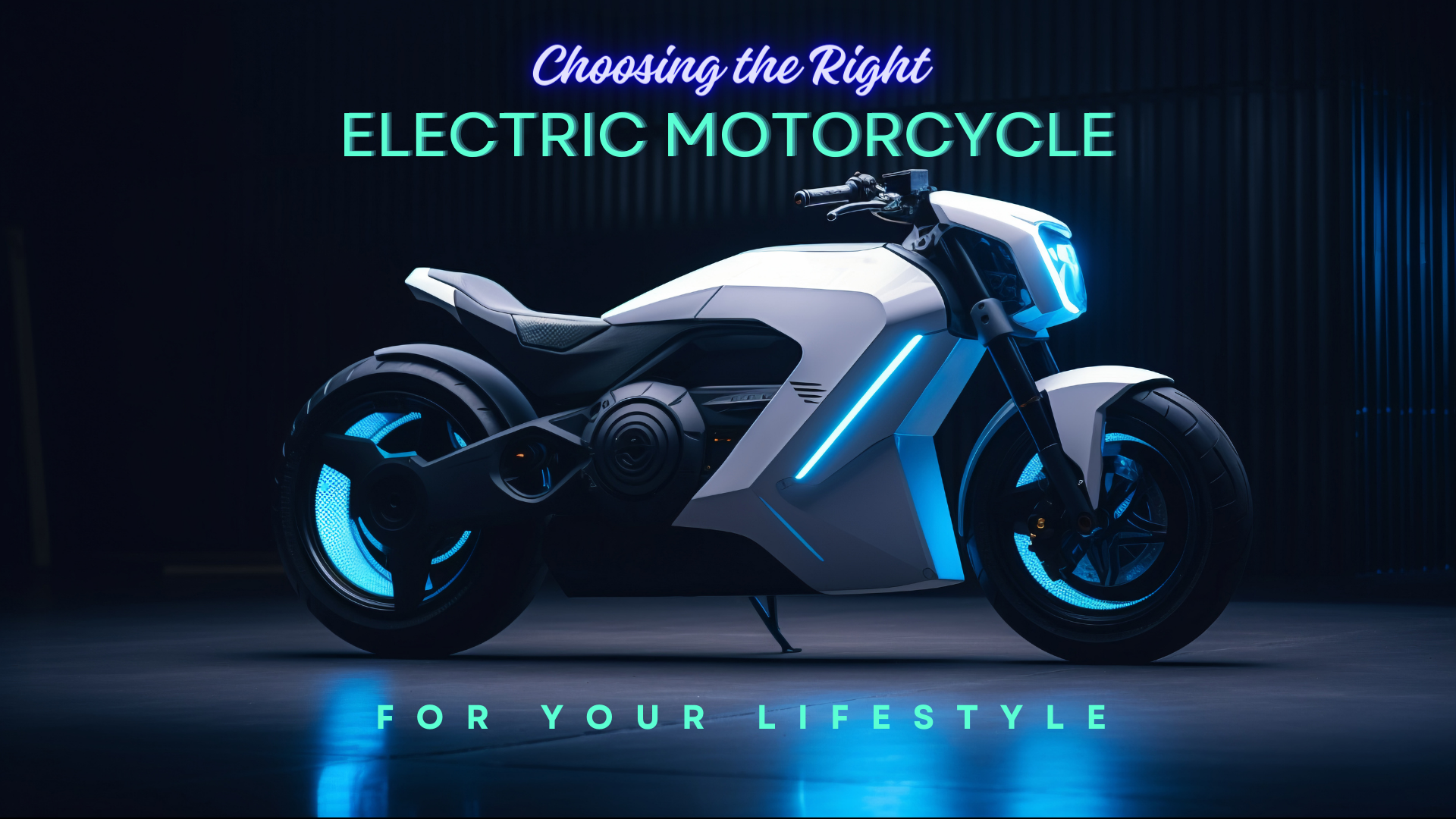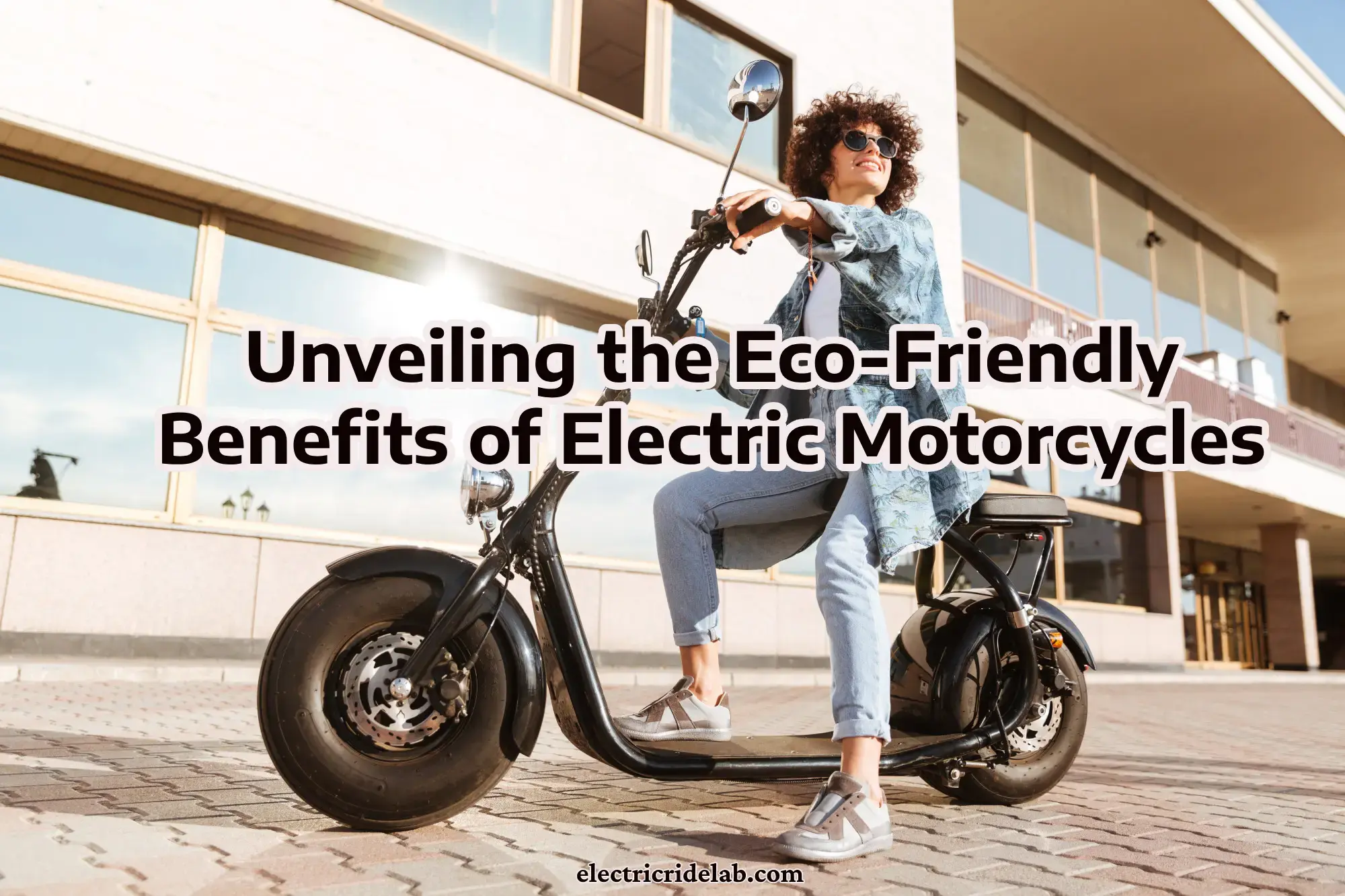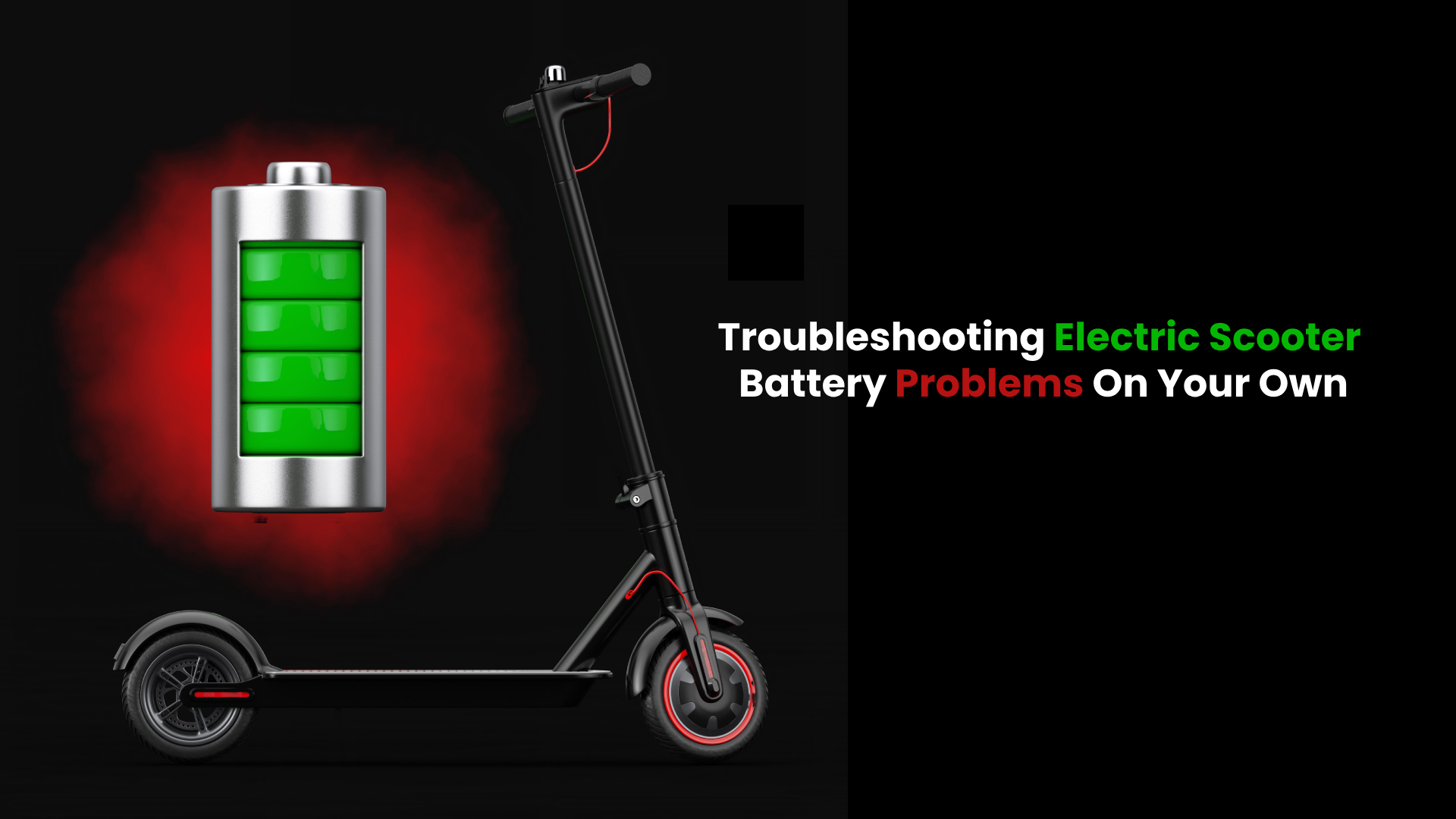So, you’re considering buying an electric scooter?
Ofcourse, they’re eco-friendly, convenient, and a blast to zip around your city. But you don’t want to buy them just because they are fun. As an urban commuter, you want to learn their ins and outs & make an informed decision.
Like any other machine, e-scooters can also experience problems, and one of the most common culprits in this regard is their battery. A failing electric scooter battery can leave you stranded and frustrated in crunch situations if you don’t know how to fix them.
You can’t always expect a technician to show up whenever your electric scooter battery runs down. Sometimes you gotta do it yourself. Troubleshooting electric scooters without the help of an expert may not be fun; but sometimes it’s necessary.
So, let’s explore some of the most common electric scooter battery problems and learn how to fix them on our own.
First Up- Reduced Battery Range
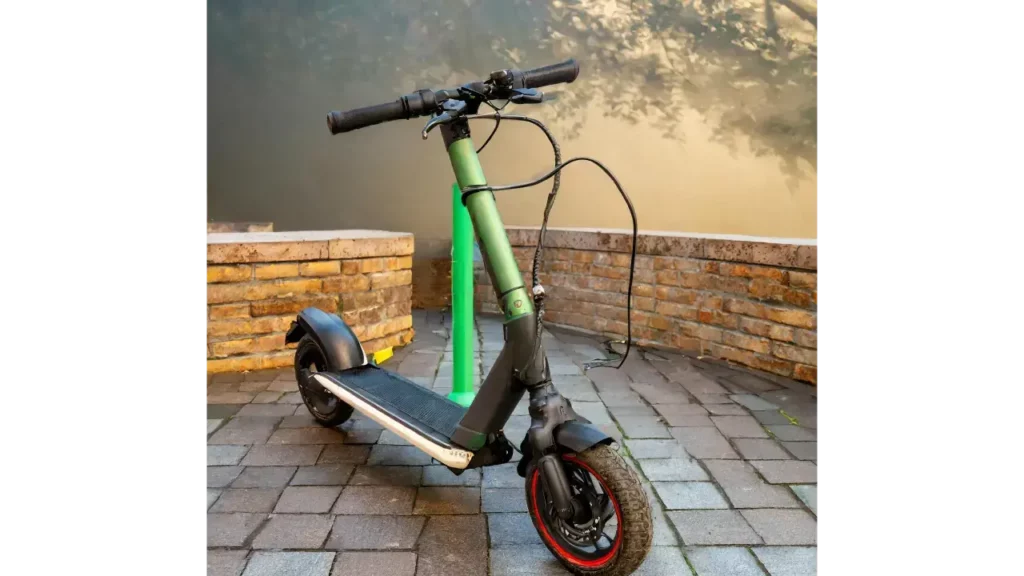
Electric scooter batteries, like most rechargeable batteries, degrade over time. This degradation reduces their capacity to hold a charge, leading to a noticeable decline in the distance you can travel on a single charge. This is often expressed as “reduced range.” While some reduction is inevitable, a sudden or significant drop in range might indicate underlying issues.
Reasons for Reduced Electric Scooter Battery Range:
- Battery Degradation: As mentioned earlier, all batteries degrade with use. This is a natural chemical process, but factors like extreme temperatures, frequent deep discharges, and improper charging practices can accelerate degradation.
- Riding Habits: Aggressive riding styles, frequent acceleration, and riding at high speeds all demand more power from the battery, leading to faster depletion. Carrying heavy loads also puts a strain on the battery and reduces range.
- Environmental Factors: Extremely hot or cold weather can significantly impact battery performance. Cold temperatures reduce battery capacity, while hot weather can damage the battery cells.
- Tire Pressure: Inflated tires increase rolling resistance, forcing the motor to work harder and drain the battery faster.
- Faulty Charger or Battery: In rare cases, a malfunctioning charger or a defective battery itself could be the culprit behind reduced range.
Effects of Reduced Range
Reduced range can be a major inconvenience, limiting your travel options and increasing your charging frequency. It can also lead to “range anxiety,” the fear of running out of power before reaching your destination. Additionally, a stressed battery can experience overheating, further accelerating degradation.
Troubleshooting Electric Scooter Battery Range
Here are some easy-to-implement solutions to improve your electric scooter’s range:
- Ride Gentle: Avoid aggressive acceleration, maintain a moderate speed, and coast whenever possible. Plan your route to minimise hills and traffic stops that require frequent starts and stops.
- Mind the Weight: Travel light and avoid overloading your scooter. Every extra kilogram adds strain to the motor and reduces range.
- Temperature Matters: Store your scooter in a cool, dry place and avoid leaving it in direct sunlight for extended periods. During extreme weather conditions, consider alternative transportation to preserve battery health.
- Maintain Proper Tire Pressure: Regularly check and inflate your tires to the manufacturer’s recommended pressure. Properly inflated tires minimise rolling resistance and maximise range.
- Develop Good Charging Habits: Avoid letting your battery completely drain before charging. Ideally, maintain a charge level between 20% and 80%. Unplug your scooter once it’s fully charged to prevent overcharging, which can damage the battery.
- Consult the Manual: Your scooter’s manual might offer specific tips and recommendations to optimise battery performance for your particular model.
If you’ve tried these troubleshooting techniques and your range hasn’t improved, it’s advisable to consult a professional. A qualified scooter mechanic can diagnose the issue and determine if a faulty charger, damaged battery, or other internal component needs repair or replacement.
Slow Charging of Electric Scooter Battery
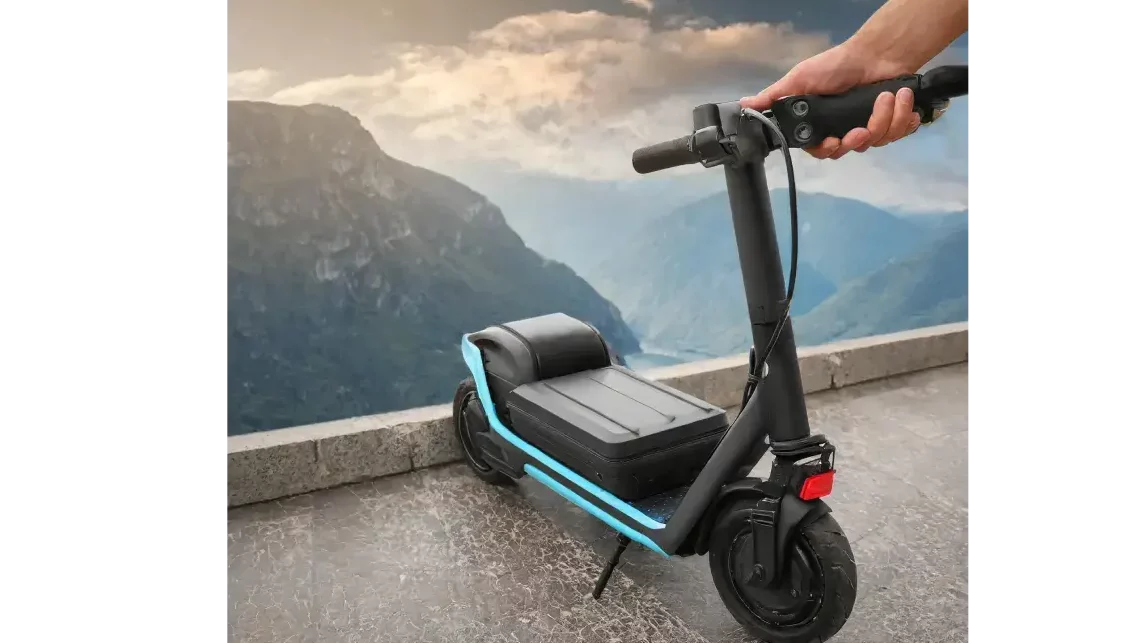
Typically, electric scooters take a specific amount of time to reach a full charge, as specified by the manufacturer. If your scooter consistently exceeds this timeframe, you’re experiencing slow charging. This can be frustrating, especially if you need a quick charge before heading out.
What Causes Slow Battery Charging
Several factors can contribute to a sluggish charge:
- Faulty Charger: The culprit might be the charger itself. Over time, chargers can wear out, become damaged, or malfunction. A faulty charger won’t deliver the optimal current needed for a speedy charge.
- Improper Charging Outlet: Ensure you’re using a reliable outlet with the correct voltage. A faulty or overloaded outlet can restrict current flow, slowing down the charging process.
- Battery Degradation: Batteries naturally lose capacity over time. An older battery might not be able to accept a charge as quickly as a newer one.
- Extreme Temperatures: Both very hot and very cold environments can hinder the charging process. Ideally, charge your scooter in a cool, dry place with moderate temperatures.
- Battery Management System (BMS) Issues: The BMS regulates battery health and charging. A malfunctioning BMS might limit the charging current to protect the battery, even if unnecessary, leading to slow charging.
- Loose Connections: Corroded or loose connections between the charger, battery, and charging port can impede current flow, causing slow charging.
Effects of Slow Charging
While not necessarily detrimental to your scooter, slow charging can be inconvenient:
- Reduced Range: If you can’t fully charge your battery in a timely manner, you might be limited in how far you can travel on a single charge.
- Increased Charging Costs: If your scooter is plugged in for longer periods, it can lead to slightly higher electricity bills.
- Frustration and Delays: Waiting for a slow charge can disrupt your schedule and overall riding experience.
Troubleshooting Electric Scooter Battery Charging Issue
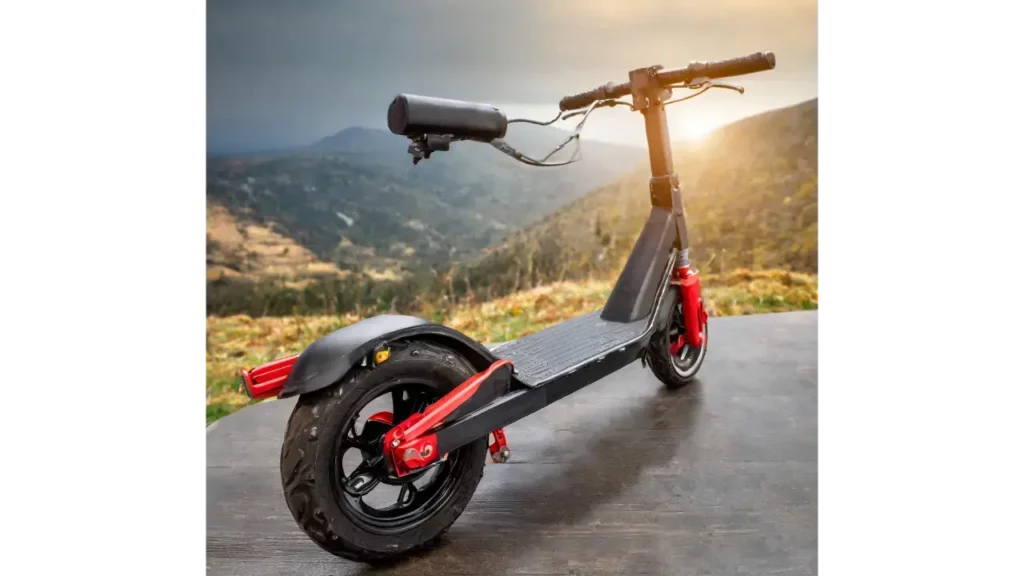
Before resorting to professional help, try these easy fixes:
- Inspect the Charger: Look for any visible damage to the charger or cord. Try using a different charger, preferably the original one that came with your scooter, to see if the problem persists.
- Test Different Outlets: Plug your scooter into a different outlet in your home or another location altogether. This will help determine if the issue lies with the specific outlet you were using previously.
- Check Battery Health: Refer to your scooter’s manual to see if there’s a way to check battery health. Some models might have indicator lights or smartphone apps that provide battery status information.
- Maintain Optimal Temperatures: Avoid charging your scooter in extreme heat or cold. If you must charge it outdoors, find a shaded area with moderate temperatures.
- Clean Connections: Carefully inspect the charging port on your scooter and the connector on the charger for any dirt, debris, or corrosion. Use a dry cloth to clean them gently. Loose connections can be tightened, but avoid over-tightening to prevent damage.
Prevention is Better than Cure
Here are some preventive measures to keep your scooter charging efficiently:
- Use the Correct Charger: Always use the charger that came with your scooter or one specifically designed for your model.
- Avoid Full Discharges: Try not to completely drain your battery before charging. It’s best to maintain a charge level between 20% and 80% for optimal battery health.
- Store Properly: When not in use, store your scooter in a cool, dry place with moderate temperatures.
Battery Not Charging At All
A non-charging electric scooter battery can be a major inconvenience for riders. It arises when no electricity is flowing into the battery, preventing it from reaching a full capacity. This can manifest in different ways. Maybe the charging indicator light remains stubbornly unlit, or maybe the scooter displays only a slight increase in charge even after hours plugged in. Whatever may be the symptom, the problem is that the battery is unable to store charge.
The Culprits Behind the Charging Conundrum
Several factors can lead to your scooter battery refusing to cooperate:
- Faulty Charger: The most common culprit is a malfunctioning charger. Over time, chargers can wear out due to regular use, power surges, or physical damage, hindering their ability to deliver power to the battery.
- Dead Battery: Batteries, like all things, have a lifespan. As they age, their capacity to hold a charge diminishes. In extreme cases, a battery might reach a point where it can no longer accept a charge at all.
- Loose Connections: A loose connection between the charger, the charging port on the scooter, or within the scooter itself can disrupt the flow of electricity, preventing charging.
- Blown Fuse: Some electric scooters have fuses in the charging circuit to protect against electrical overloads. A blown fuse can completely halt the charging process.
- Battery Management System (BMS) Issues: The BMS is the electronic guardian of your battery, managing its charge and discharge cycles. A malfunctioning BMS might prevent charging for safety reasons, even if there’s no real danger to the battery itself.
Troubleshooting Electric Scooter Battery Not-Charging Issue
- Check Connections: Ensure the charger is securely plugged into both the wall outlet and the charging port on your scooter. Wiggle the connections slightly to see if there’s any loose contact. Clean the charging port on your scooter with a dry, compressed air can to remove any dust or debris that might be causing a poor connection.
- Consult the Manual: Your scooter’s manual might offer troubleshooting tips specific to your model, including how to check for blown fuses (if applicable).
- Reset the Scooter: Sometimes, a simple reset can resolve electronic glitches. Consult your manual for specific instructions, but it might involve turning off the scooter completely, removing the battery for a short time (if possible), and then powering it back on.
If the issue still persists, it means either your charger is damaged or your scooter’s battery pack is dead. If it’s just the charger, you can replace the faulty one with the correct one and resolve the issue. As for extinguished batteries, there’s no real fix. You have to replace it with a new one as your old battery has reached the end of its life span.
Overheating of Electric Scooter Battery
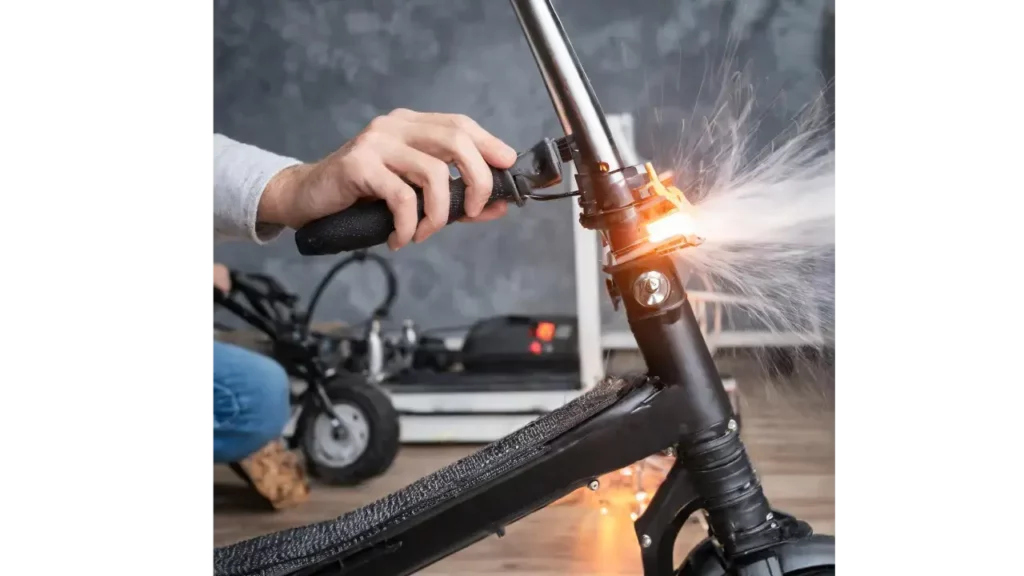
Lithium-ion batteries, the most common type used in electric scooters, generate heat during operation. This is normal. However, when the temperature exceeds safe operating limits, it’s considered overheating. Signs of overheating can include:
- Unusual heat: The battery pack itself feels hot to the touch.
- Unusual scooter behaviour: The scooter might lose power, experience reduced performance, or even shut down completely.
- Warning lights: Some scooters have indicator lights or error messages that warn of overheating.
The Culprits Behind the Scorching Situation
Several factors can contribute to an electric scooter battery overheating:
- Overcharging: Leaving your scooter plugged in for extended periods, even after it’s fully charged, can cause the battery to overheat.
- Extreme Temperatures: Charging or using your scooter in very hot or cold weather can put extra stress on the battery, leading to overheating.
- Demanding Terrain: Riding your scooter on steep inclines, rough terrain, or against strong headwinds can cause the motor and battery to work harder, generating more heat.
- Damaged Battery: A battery that has reached the end of its lifespan or sustained internal damage might be more prone to overheating.
The Effects of Electric Battery Overheating
Overheating can have serious consequences for your electric scooter. In recent times, we’ve also heard a wide range of complaints about e-scooter battery explosions here in the US.
- Reduced Battery Life: Heat degrades battery capacity, meaning you’ll get fewer miles on a single charge over time.
- Permanent Battery Damage: Severe overheating can permanently damage the battery, rendering it unusable.
- Increased Fire Risk: In extreme cases, overheating batteries can pose a fire risk.
Troubleshooting Electric Scooter Battery Overheating Issue
When faced with such situations, do not panic.Get off the vehicle immediately and turn off your scooter. Unplug your charger, if it’s connected. Then let the scooter and battery cool down completely in a shaded, well-ventilated area before attempting to use it again.
It is advisable to plan your rides during favourable weather conditions rather than extreme ones in the future.
Anything Beyond, Consult an Expert
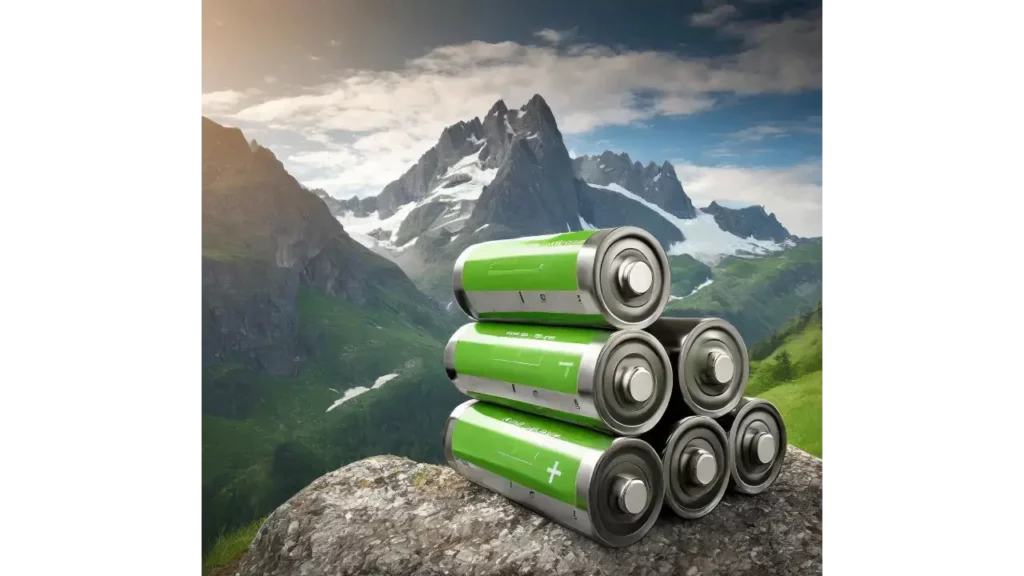
If the above steps don’t solve the problem, reach out to your scooter’s manufacturer or authorised service centre for further assistance. They may be able to diagnose the issue and recommend repairs or replacements. Especially in cases of overheating issues, do not hesitate reaching out for help.
You can also write to us at [email protected] or leave us a comment down below.
FAQs
-
Why does my electric scooter turn on but not move?
This could be due to a battery that is dropping power under load. You might need to test the voltage of your electric scooter battery pack and perform a deep charge, or the battery pack might need replacing.
-
Why has my electric scooter stopped working?
It’s possible that there is an issue with the charger or the Battery Management System (BMS). Check the charger with a voltmeter or multimeter to ensure it’s providing the correct voltage. If the BMS is faulty, it may need replacement.
-
Why won’t my electric scooter start?
A common reason could be a dead battery. Batteries have a limited lifespan and may need to be replaced if they no longer hold a charge.
-
Electric scooters losing power when accelerating, what are the solutions?
This issue often points to battery problems. Inspect the charger, BMS, and voltage. If these components are functioning properly, consider checking the electrical connections and the motor for any faults.
-
Why does only one wheel spin on my electric scooter?
This might indicate a problem with the motor or the controller. Ensure that all connections are secure and consider cleaning the motor if necessary.

